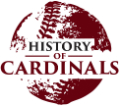What was the fallout from using cork-and-rubber-center baseballs?
Pitchers were no longer permitted to alter baseballs or use trick pitches. A fresh ball was used in play at all times. On average, nearly ten runs were scored per game. Batting average and homerun records were shattered. In 1930, the National League’s batting average was over .300. Starting pitchers completed their games 47% of the time. In 1935, “night” baseball was introduced.
New Baseballs Used
Umpires were required to put new balls into play whenever the current ball became scuffed or discolored. This rule change was enforced all the more stringently following the death of Ray Chapman, who was struck in the temple by a pitched ball from Carl Mays in a game on August 16, 1920 (he died the next day). Discolored balls, harder for batters to see and therefore harder for batters to dodge, have been rigorously removed from play ever since.
Side Effects
So what are the effects of the “live ball” era? There are two side effects. One, of course, is that if the batter can see the ball more easily, the batter can hit the ball more easily. The second is that without scuffs and other damage, pitchers are limited in their ability to control spin and so to cause altered trajectories.
